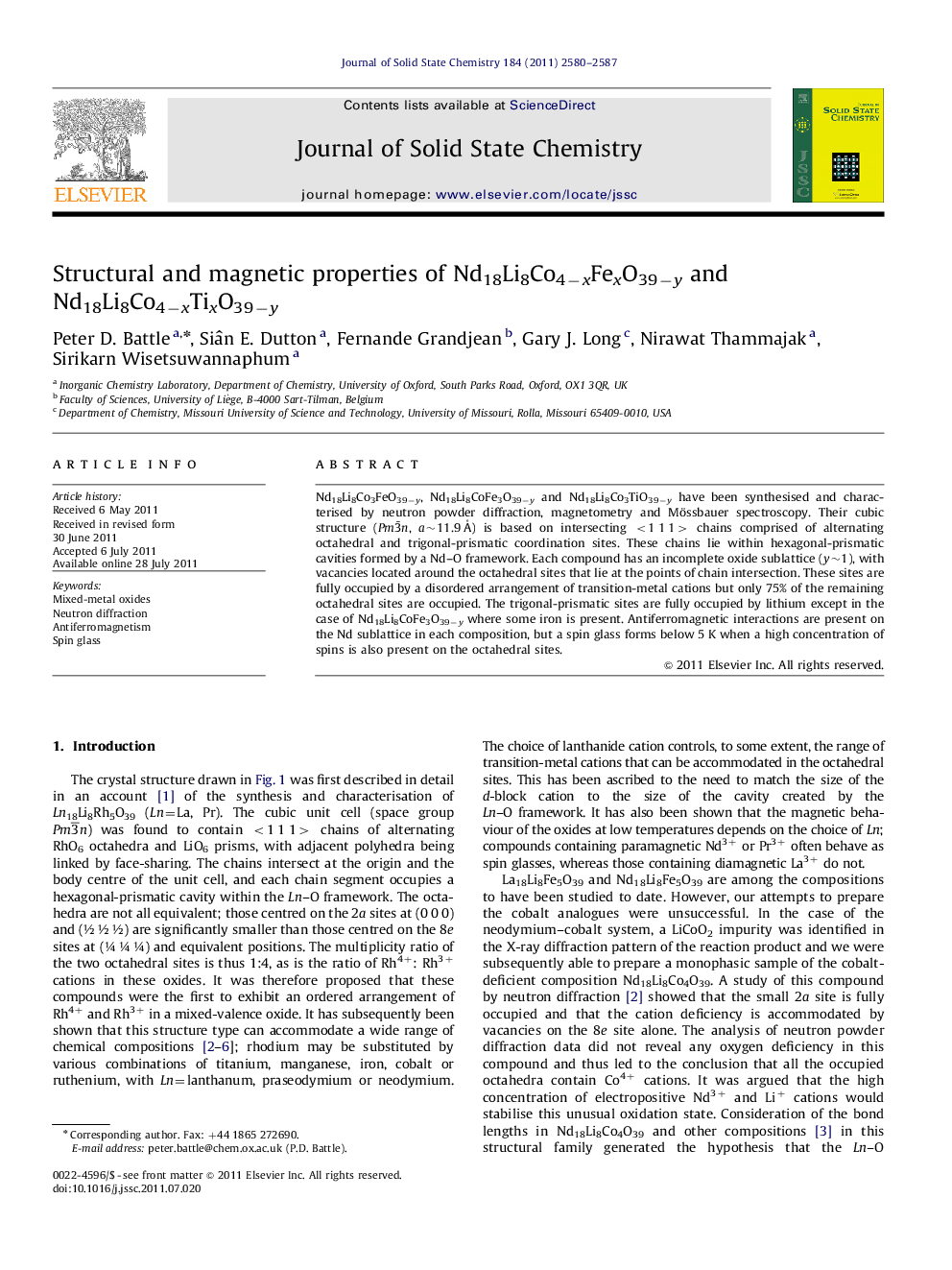| Article ID | Journal | Published Year | Pages | File Type |
|---|---|---|---|---|
| 1329098 | Journal of Solid State Chemistry | 2011 | 8 Pages |
Nd18Li8Co3FeO39−y, Nd18Li8CoFe3O39−y and Nd18Li8Co3TiO39−y have been synthesised and characterised by neutron powder diffraction, magnetometry and Mössbauer spectroscopy. Their cubic structure (Pm3̄n, a∼11.9 Å) is based on intersecting <1 1 1> chains comprised of alternating octahedral and trigonal-prismatic coordination sites. These chains lie within hexagonal-prismatic cavities formed by a Nd–O framework. Each compound has an incomplete oxide sublattice (y∼1), with vacancies located around the octahedral sites that lie at the points of chain intersection. These sites are fully occupied by a disordered arrangement of transition-metal cations but only 75% of the remaining octahedral sites are occupied. The trigonal-prismatic sites are fully occupied by lithium except in the case of Nd18Li8CoFe3O39−y where some iron is present. Antiferromagnetic interactions are present on the Nd sublattice in each composition, but a spin glass forms below 5 K when a high concentration of spins is also present on the octahedral sites.
Graphical AbstractCation and anion vacancies are found to coexist in mixed-metal oxides that adopt the La18Li8Rh5O39 structure.Figure optionsDownload full-size imageDownload as PowerPoint slideHighlights► Coexistence of anion and cation vacancies in compounds adopting the La18Li8Rh5O39 structure. ► Variation of the degree of magnetic frustration with the chemical composition in the La18Li8Rh5O39 structure. ► Controlling influence of the magnetic properties of the lanthanide cation becomes clear.
